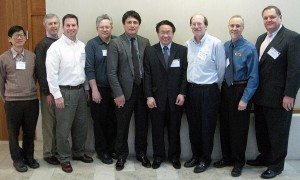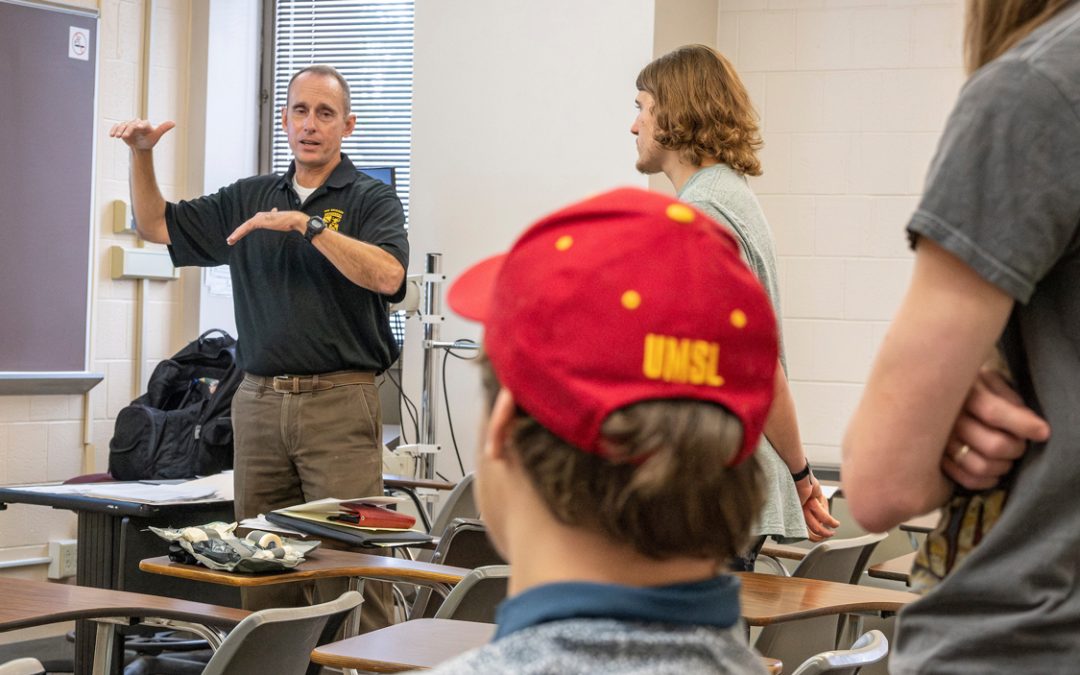The St. Louis Institute of Nanomedicine’s first annual symposium, “Pathway to Translation,” took place Feb. 13 at the Farrell Learning and Teaching Center at Washington University in St. Louis with Tom George, chancellor of the University of Missouri-St. Louis, serving as one of its keynote speakers.
SLIN is a joint venture principally sponsored by UMSL, St. Louis Community College, St. Louis University and Washington University to use nanotechnologies to treat human disease.

UMSL faculty and administrators at the St. Louis Institute of Nanomedicine's symposium are, from left, Chung Wong, David Osborn, Mike Nichols, Keith Stine, Nasser Arshadi, Jingyue Liu, Wesley Harris, Tom George and George Gokel.
Representatives from all four educational institutions, including George Gokel, associate director of the Center of Nanoscience at UMSL, and Tamara Wilgers, director of technology transfer at UMSL, spoke at the symposium along with other academics and local leaders in biotechnology.
The one-day program featured topical lectures on nano-diagnostics, regional infrastructure and nano-therapeutics, as well as breakout sessions on commercialization and the challenges of translation.
SLIN speakers stressed that nanomedicine will be a trillion dollar industry in the coming years and St. Louis wants to be an established “hot spot” for moving ideas out of academia and into a commercial setting.
“This collaboration is a technology-based opportunity for Missouri,” Jason Hall, executive director of the Missouri Technology Corporation, told the approximately 100 people in the lecture hall.
SLIN focuses on developing and evaluating new nanotechnologies for health care, facilitating technology transfer and commercialization, establishing testing protocols, training a capable work force and providing general public education. SLIN also will pull regional resources to support joint research projects and will evolve into a nexus of regional nanomedicine research activities. It has already approved eight pilot projects, two of which will be led by UMSL researchers.
The Center for Nanoscience at UMSL plays a major role in the collaboration. CNS members George and Gokel contributed to the initial proposal submitted to the Missouri Life Sciences Research Board to establish a regional nanomedicine institute. Jimmy Liu, director of CNS, sits on the institute’s advisory board.
More information:
http://nano.wustl.edu/














